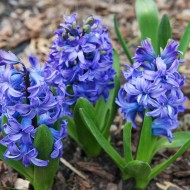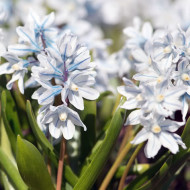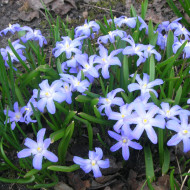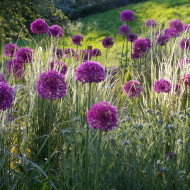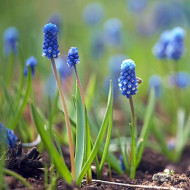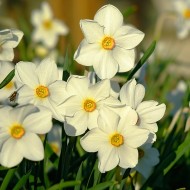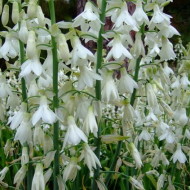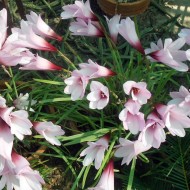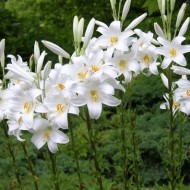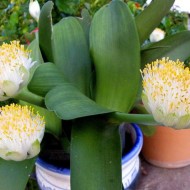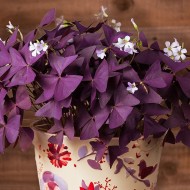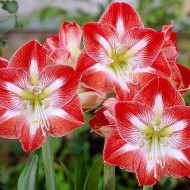25 bulbous flowers for the garden and home: photos and descriptions
Content
Description and features of bulbous flowers
Bulbous plants are representatives of the flora belonging to three families: Onions, Liliaceae, Amaryllis. Many people often confuse them with tuberous crops. They got their name due to the special structure of the stem. Unlike tubers, which only store nutrients, bulbs are the embryo of a flower.

Plants owe their popularity among gardeners to the following advantages:
- simple transplant procedure;
- the possibility of forcing at any time of the year;
- long preservation of varietal qualities (up to 10 years).
The only drawback of bulbs is that, when grown for a long time in one area, they deplete, and sometimes can even poison the soil.
Although the homeland of plants is the subtropics, they are undemanding to care and adapt well to any climate. At low temperatures, the flowers fall into a dormant state, which allows them to survive the winter without consequences. Breeding them also does not require complex agronomic skills. Special attention should only be paid to the transplanting process and winter storage.
Video "Bulbous flowers for the garden"
This video features a variety of bulbous crops.
The best representatives of bulbous for the garden
Gardeners love these representatives of the flora for their external aesthetics and early flowering. Having planted bulbs in their personal plot, they will be the first to paint the lawns in bright colors. Below we present an overview of the best representatives of decorative flowers for the garden.
Early primroses
These include perennials that bloom with the arrival of spring.
Wintering spring
The earliest garden representative, the flowering of which begins in late February or early March, when the snow cover has not yet melted. Plant height is 10 cm, color is bright yellow. Flowers grow very quickly and do not like shade.
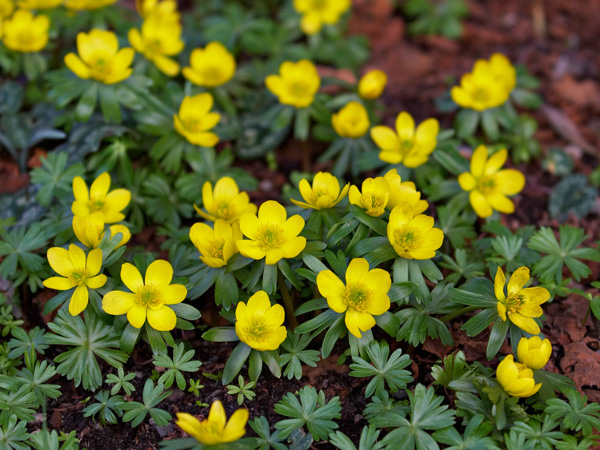
Galanthus
Known to most gardeners as a snowdrop. Making its way through the snow that has not yet melted, the plant blooms with snow-white flowers. Its height reaches 10 cm, and green blotches can be found in the color. Loves sunny or slightly shaded places.
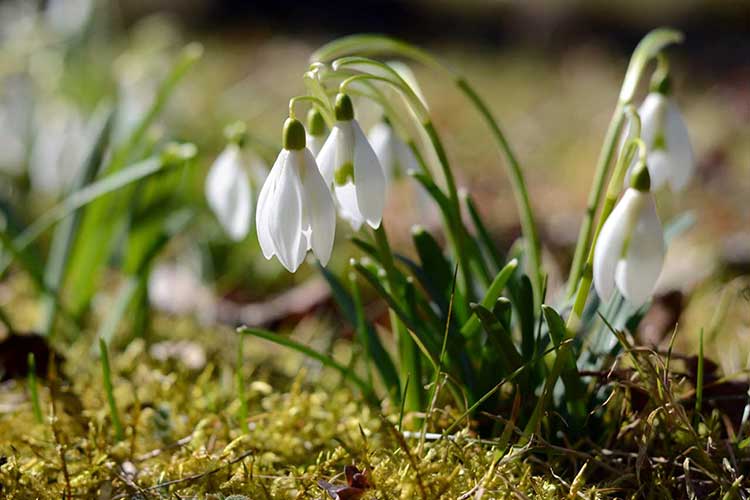
Crocuses
Spring bulbous with a variety of colors. Depending on the variety, the color can be white, yellow, orange, pink, lilac or purple. Bloom by the end of March or with the arrival of April. In a well-lit area, the crocus shade will be richer.
From the stigmas of the plant, the well-known spice is extracted - saffron.
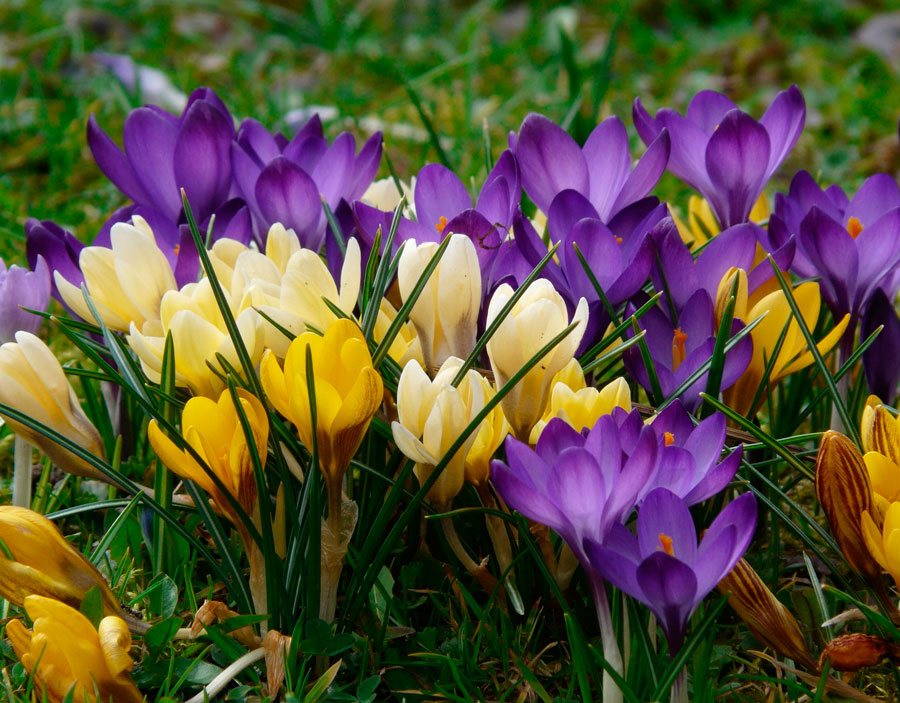
Chionodox
Low-growing bulbous (up to 10 cm) with good growing ability. Prefers shade or partial shade.Blossoms with blue inflorescences with snow-white cores. The advantage of chionodox is that it does not need to be dug out for the winter.
Pushkinia proleskovidnaya
The second name of the plant is scilloid pushkinia. It grows up to 10 cm, grows poorly in the shade, and therefore it is better to plant it in sunny areas. It tolerates frost well even during flowering. Having blossomed, the petals become white with a blue stripe.
Oriental hyacinth
A medium-sized flower, sometimes reaching 25 cm. Depending on the variety, the plants can be white, pale pink, bright purple, purple-lilac, crimson, creamy orange or rich yellow. The shade becomes brighter the more light the hyacinth receives.
- Eastern hyacinth
- Pushkinia proleskovidnaya
- Chionodox
Tulip
Spring flowers blooming closer to May. Their height can range from 10 to 50 cm. The color depends on the variety. Snow-white, bright yellow, scarlet, coral, lilac or pink tulips with various shades and blotches are often found. The plant prefers sunny areas of the garden.
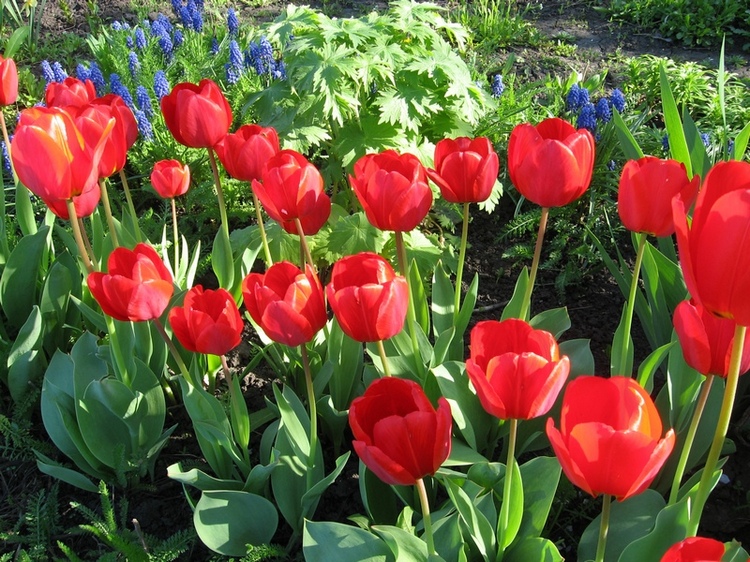
Narcissus
The first flowering begins in mid-spring. As a rule, these are dwarf and tubular species. A little later, crown daffodils bloom. The color, size and shape of the flower depends on the variety. So, the height of a sun-loving plant is 15–45 cm, and the petals can be white, yellow or pale pink.
Muscari
These bulbs are also known as mouse hyacinth or viper onions. A low-growing plant (up to 10 cm) blooms in April and likes well-lit places. Muscari inflorescences have a conical shape, they are white with a bluish or pale pink tint.
Allium
The heat-loving flower is commonly known as an ornamental bow. It dissolves only at the end of May. At the end of the stem, multi-colored fluffy balls of white, lilac, blue or red color with different shades are formed. The height of the allium ranges from 10 to 175 cm.
- Allium
- Muscari
- Narcissus
Iridodictium, or reticulated iris
It should not be confused with ordinary irises, since the latter do not belong to bulbous plants. This flower is smaller (up to 15 cm), and also has a different inflorescence shape. Iridodictium can be white, pale yellow, blue, blue or purple.
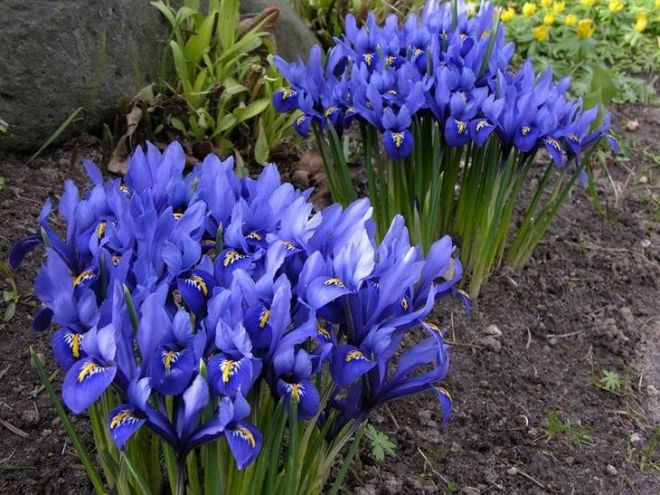
Summer bulbous
Subspecies include plants that bloom from early summer to early September.
Montbrecia
Tall flowers of bright yellow, red-orange or dark scarlet color. The perennial is also known as the Japanese gladiolus and is related to irises. Possesses high expanding ability. The flowering period is up to 3.5 weeks. Montbrecia is best planted in sunny, elevated areas.
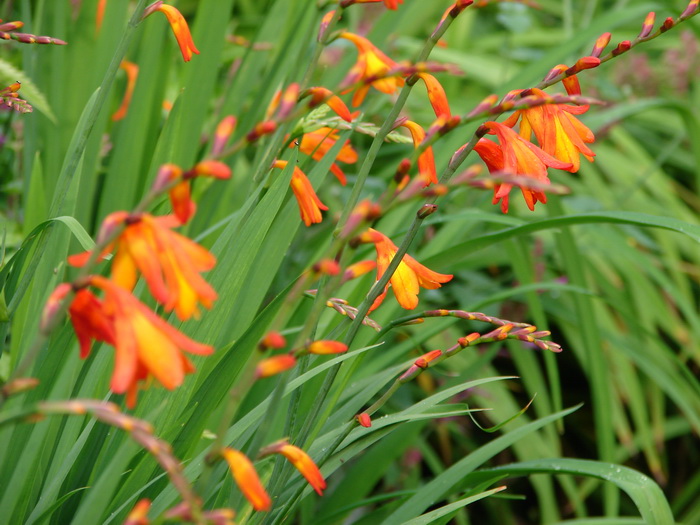
Garden bows
The flowering period begins in July, in warmer regions from June. Garden bows are represented by dwarf and giant varieties. They are covered with round fluffy caps of a lilac-lilac or burgundy shade. Planting can be done twice per season: in April and early October.
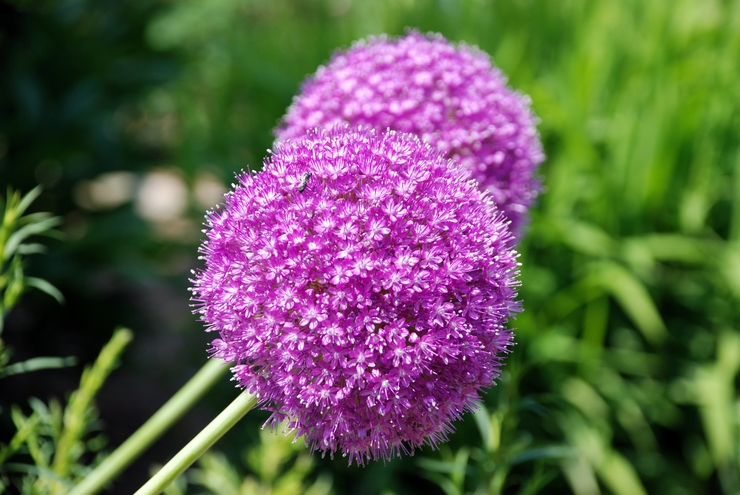
Lilies
Bulbous bushy perennials with a wide variety of shades. Depending on the variety, tall plants have different flowering periods and colors. They are very fond of moist loamy soil, fed with mineral fertilizers.
Gabrantus
The main feature of gabrantus is that the buds open only after abundant watering or rain. They are colored white, yellow-orange or lilac-pink. In order for the plant to bloom on time, it should be planted no later than April.For the winter, the bulbs need to be dug out, since the flower is not winter-hardy.
Galtonia, or African hyacinth
A tall plant up to 100 cm high. Its structure resembles a bell. In summer, it is densely covered with small snow-white flowers. Galtonia does not like shade and does not tolerate drafts. Feels comfortable on compost-fertilized soil. African hyacinth does not tolerate winter well, and therefore the bulbs must be dug up.
- Galtonia
- Gabrantus
- Lilies
Varieties with autumn flowering period
There are also bulbous perennials that bloom in autumn.
Garden cyclamen
Highly decorative plant with wide mottled leaves and large flowers of white, scarlet or bright pink hue. He does not like the bright sun, and therefore it is better to plant cyclamen in shaded areas. The soil should be nutritious and not waterlogged. It is recommended to cover the perennial for the winter.
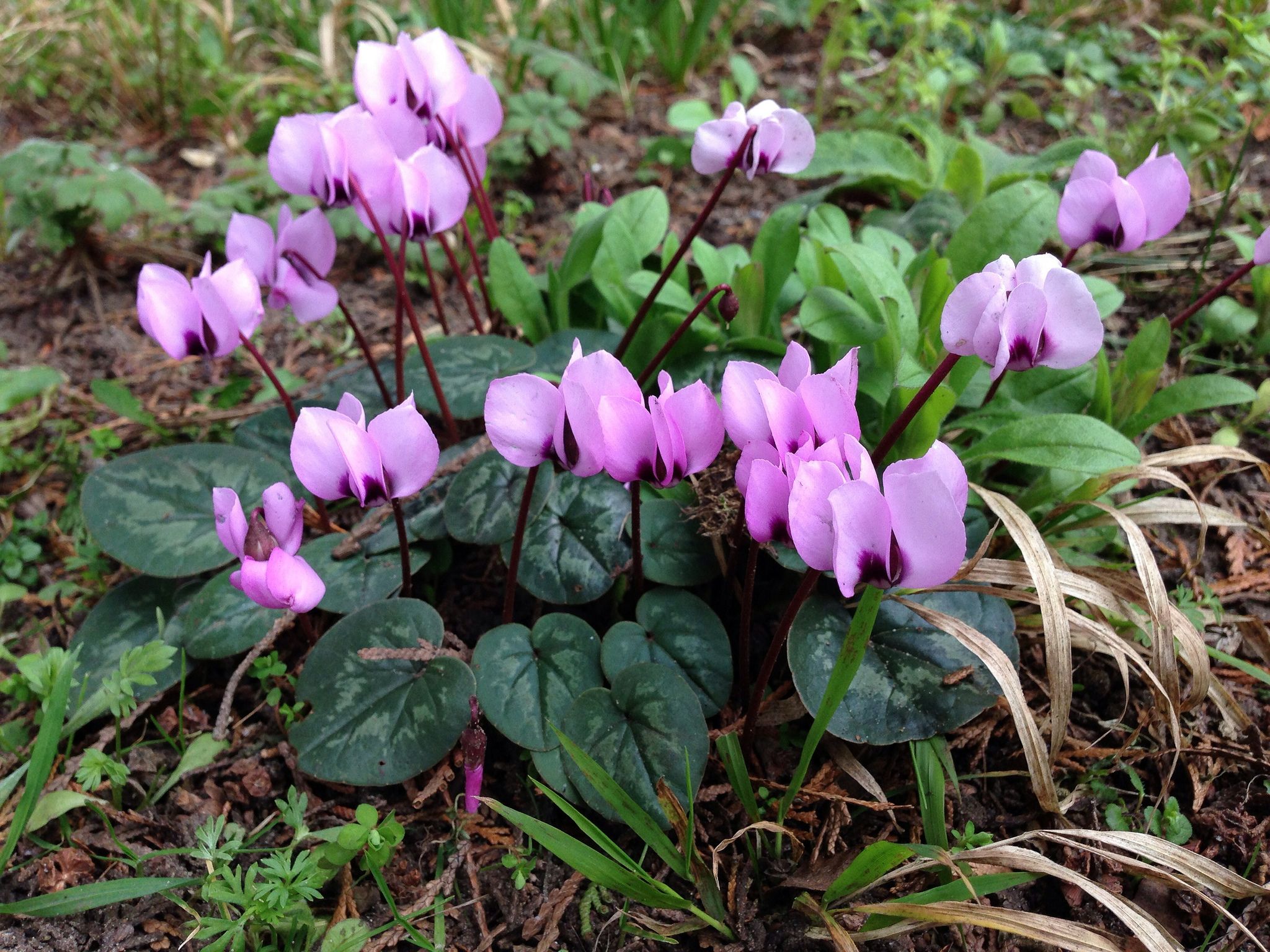
Colchicum
Miniature autumn perennial of a gentle lilac shade. Feels comfortable in sunny areas. The soil should pass moisture well, since the plant does not like its excess. The composition of the soil can be any, however, drainage is imperative. It is recommended to plant a crocus in August.
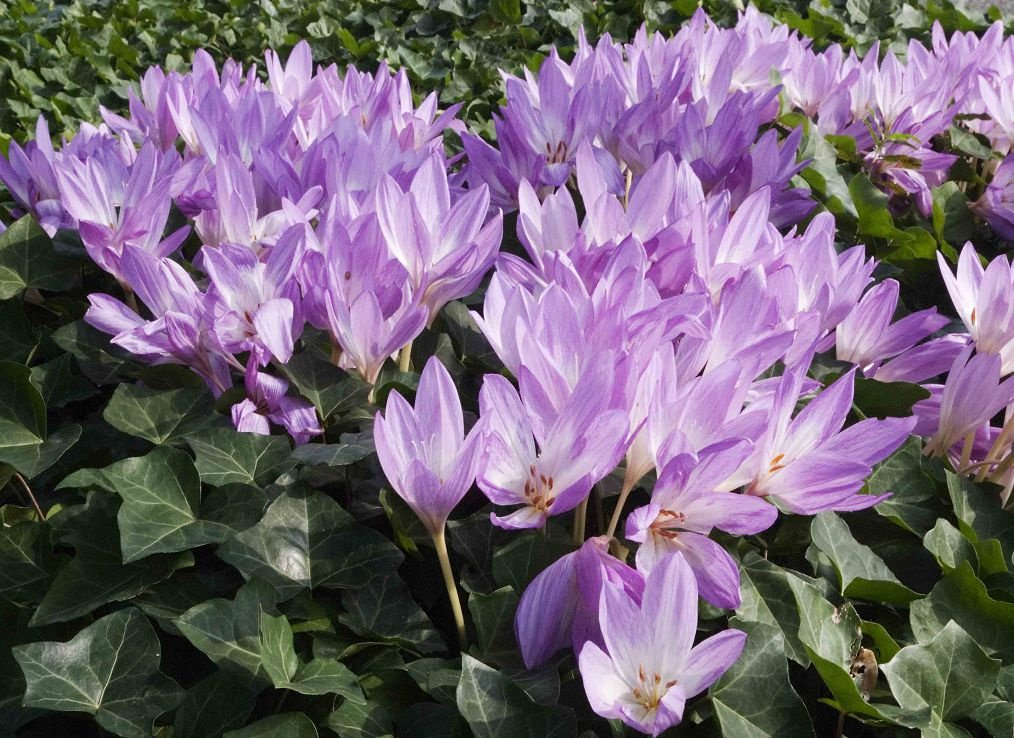
Home bulb plants
Bulbous flowers can be planted not only in personal plots. Florists often grow ornamental plants at home on windowsills.
Hippeastrum
A tall perennial up to 100 cm high. Up to 6 buds can be placed on one shoot, which, when opened, have a coral shade. The flowers are quite large, their circumference reaches 25 cm. Hippeastrum begins to bloom in early spring, less often in February. Dislikes excessive lighting and acidic soil.
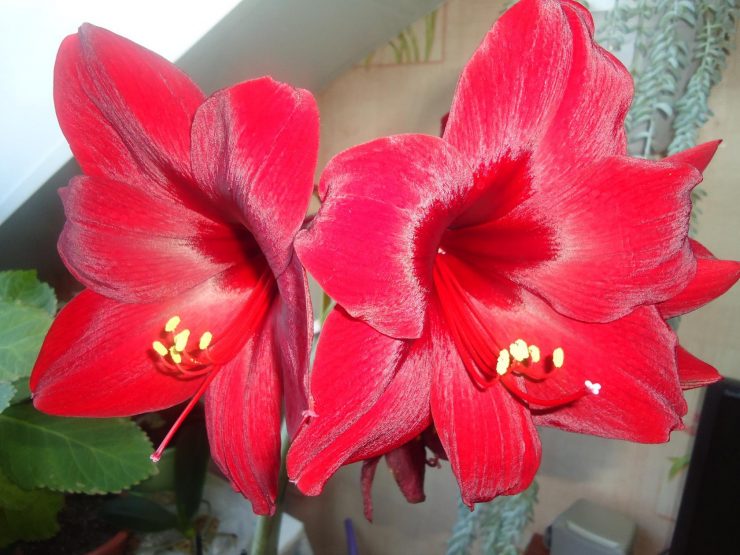
Amaryllis
The plant has a short flowering that starts in April and lasts only a week. Lily-shaped inflorescences are painted in a rich scarlet hue. Their size is slightly smaller than that of the hippeastrum, as well as the height of the shoots. Amaryllis is a sun-loving perennial, and therefore it is better to put a flowerpot with it on the southern windows.
Kislitsa
This flora is also known as hare cabbage. Oxalis belongs to the undersized species and grows very well. During flowering, it is covered with a carpet of white flowers with lilac stripes. When watering from above or in bright light, the plant folds its leaves. Prefers partial shade, slightly acidic substrate, high humidity.
Gemantus
The elephant's ear, as this perennial is also called, has large snow-white flowers with many bright yellow stamens. A pot with a plant is best placed on the east or west windows, avoiding an excess of sunlight. Gemantus is very fond of water, but care must be taken to ensure that the substrate is well drained.
- Gemantus
- Kislitsa
- Amaryllis
Rodophiala
The flowering period of Rodophial falls at the end of summer and lasts only a week. This is a moisture-loving plant that needs bright light. On each shoot there is one lily-shaped flower with a circumference of up to 20 cm. The color of the petals is pink-purple with burgundy stripes.
Perennial grows best in greenhouses, where it is possible to maintain the conditions it needs.
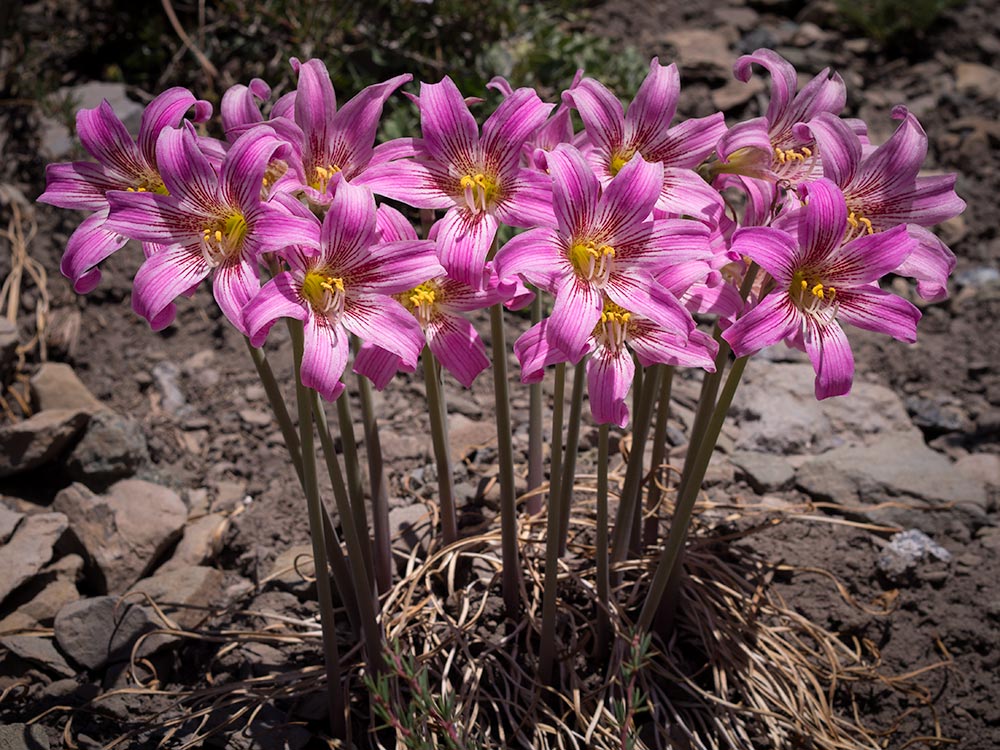
Drimiopsis
A short plant with long, spotted leaves and spiky inflorescences. Each shoot is strewn with small white-green flowers. Their number can be from 20 to 30 pieces. Feeding Drimiopsis is recommended to be carried out every 10 days with compositions for succulents.
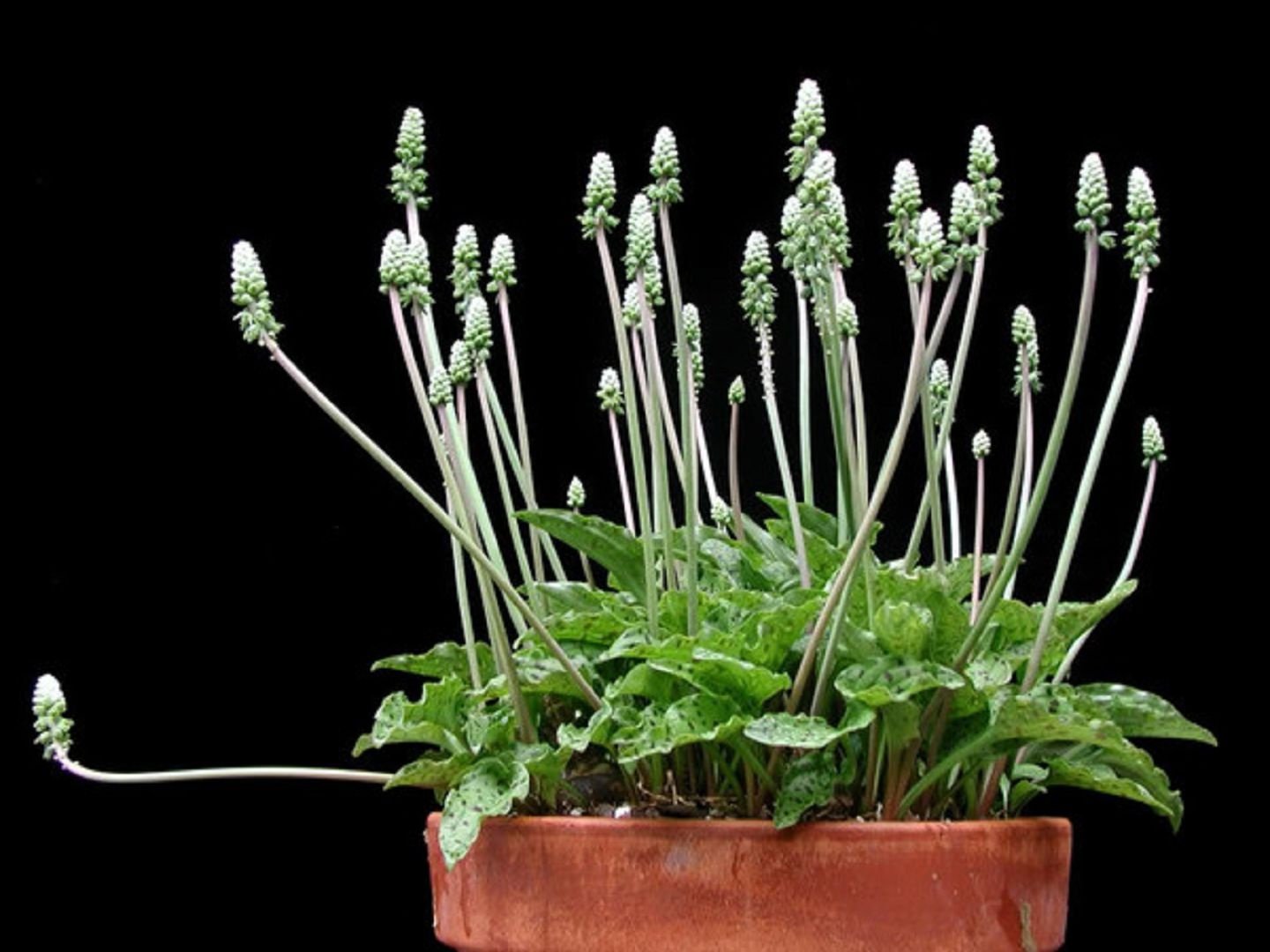
Vallota
A low-growing perennial of a beautiful rich carrot-red hue. One shoot can have up to 9 buds.The wallot is opened from mid-April to June. Flowering lasts 14 days. The substrate for the plant should be slightly acidic, with good permeability. The decorative flower does not like the bright sun.
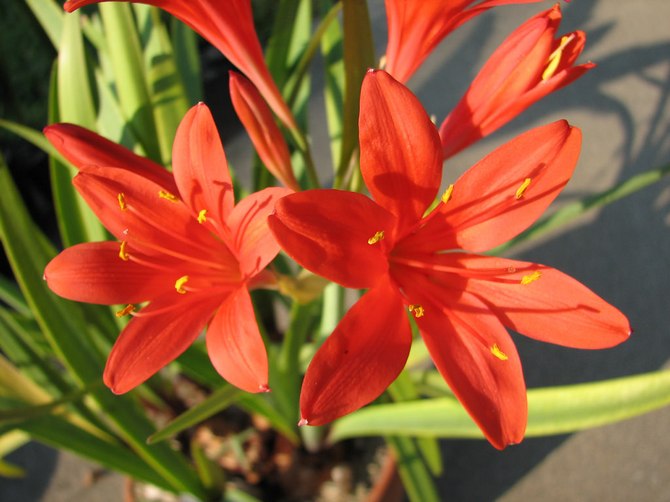
Bulbous plants and landscaping
Bulbous perennials are very often used to create flower arrangements and decorate lawns. With their bright color, they fit well into the overall pattern, and also go well with many garden plants. To make the garden look harmonious, it is enough to adhere to a few simple rules:
- Combine warm shades with cold ones, but make sure that the colors do not stand out from the general palette.
- It is better to stick to 2-3 tones, one of which will prevail. Monotony or excessive variegation will not benefit the overall design.
- Plant tall plants in the background. So miniature bulbous will look much more profitable.
- If you want to create a "creative mess" in the flower bed, then in one composition you can plant different types of perennials.
- Do not be overzealous when decorating the borders. Do not arrange flowers too often and in a row. Better to make small, equidistant groups.
- To bloom from spring to autumn, pick up bulbs of different ripening times. Thus, some plants will imperceptibly replace others.
A wide variety of bulbous perennials opens up a wide scope for a flight of imagination. With their help, you can make any garden plot unique, and while living in an apartment, admire them on the windowsills.

